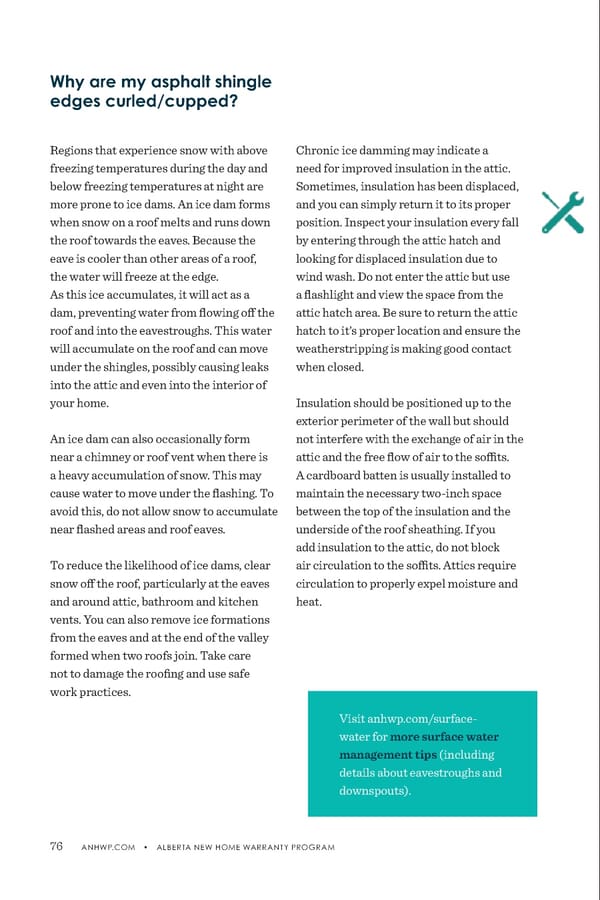Regions that experience snow with above freezing temperatures during the day and below freezing temperatures at night are more prone to ice dams. An ice dam forms when snow on a roof melts and runs down the roof towards the eaves. Because the eave is cooler than other areas of a roof, the water will freeze at the edge. As this ice accumulates, it will act as a dam, preventing water from flowing off the roof and into the eavestroughs. This water will accumulate on the roof and can move under the shingles, possibly causing leaks into the attic and even into the interior of your home. An ice dam can also occasionally form near a chimney or roof vent when there is a heavy accumulation of snow. This may cause water to move under the flashing. To avoid this, do not allow snow to accumulate near flashed areas and roof eaves. To reduce the likelihood of ice dams, clear snow off the roof, particularly at the eaves and around attic, bathroom and kitchen vents. You can also remove ice formations from the eaves and at the end of the valley formed when two roofs join. Take care not to damage the roofing and use safe work practices. Chronic ice damming may indicate a need for improved insulation in the attic. Sometimes, insulation has been displaced, and you can simply return it to its proper position. Inspect your insulation every fall by entering through the attic hatch and looking for displaced insulation due to wind wash. Do not enter the attic but use a flashlight and view the space from the attic hatch area. Be sure to return the attic hatch to it’s proper location and ensure the weatherstripping is making good contact when closed. Insulation should be positioned up to the exterior perimeter of the wall but should not interfere with the exchange of air in the attic and the free flow of air to the soffits. A cardboard batten is usually installed to maintain the necessary two-inch space between the top of the insulation and the underside of the roof sheathing. If you add insulation to the attic, do not block air circulation to the soffits. Attics require circulation to properly expel moisture and heat. Why are my asphalt shingle edges curled/cupped? Visit anhwp.com/surface- water for more surface water management tips (including details about eavestroughs and downspouts). 76 ANHWP.COM • ALBERTA NEW HOME WARRANTY PROGRAM
 ANHWP Care & Maintenance Guide 2022 Page 77 Page 79
ANHWP Care & Maintenance Guide 2022 Page 77 Page 79